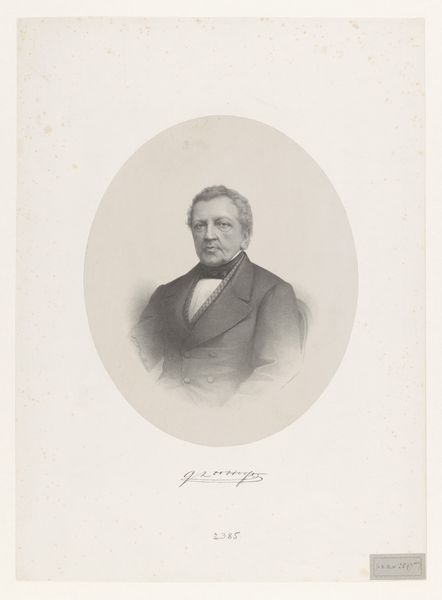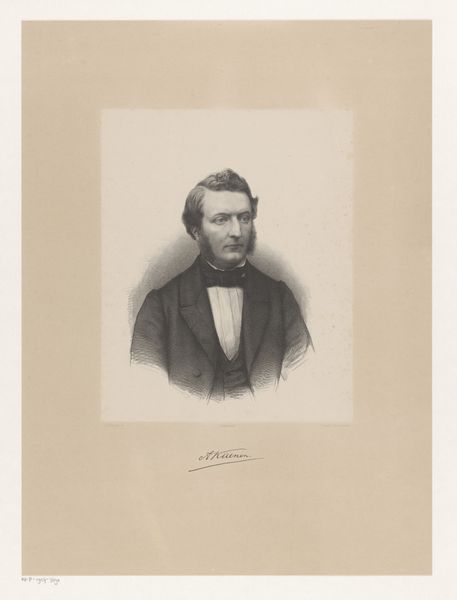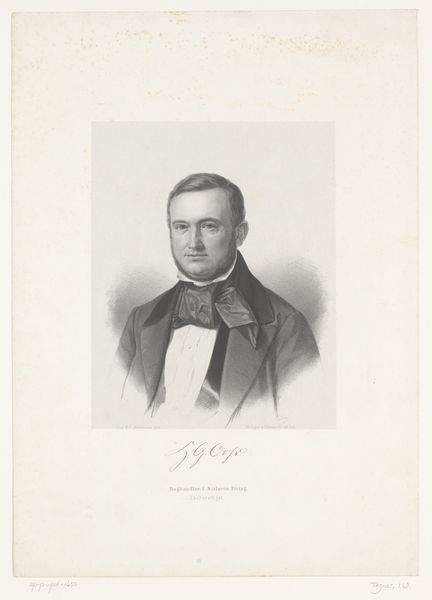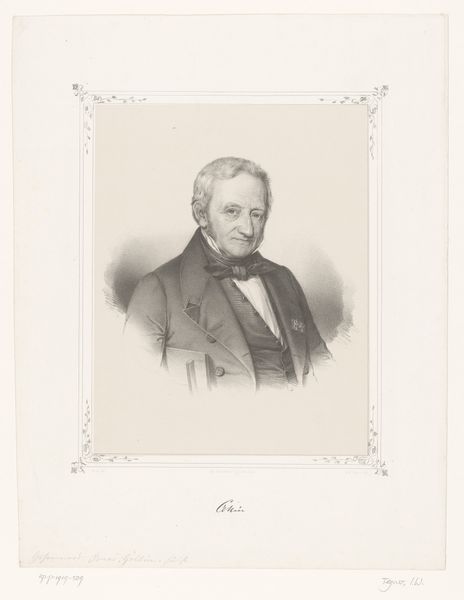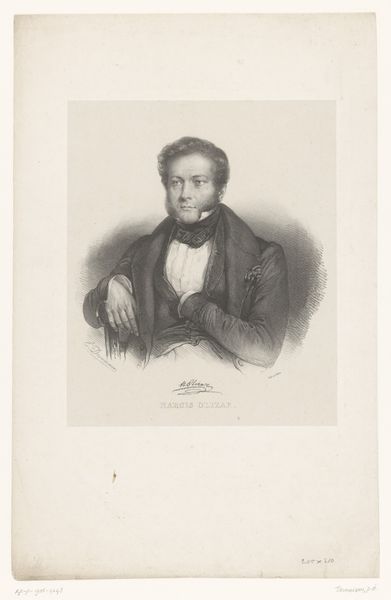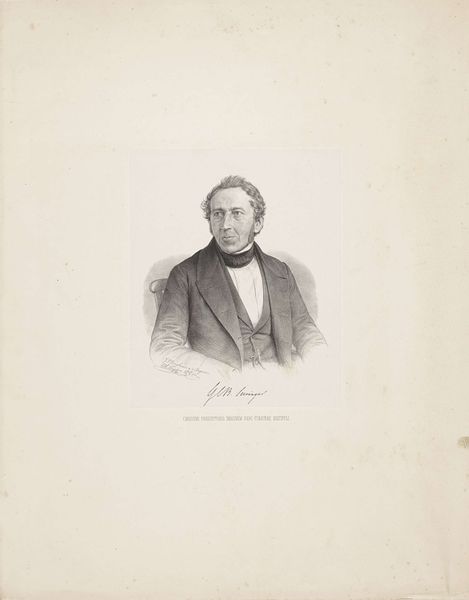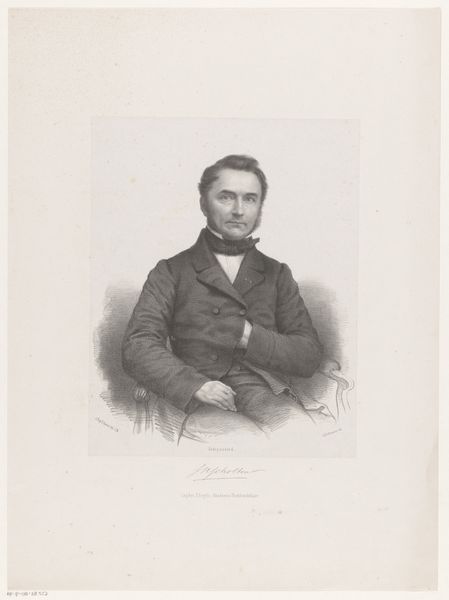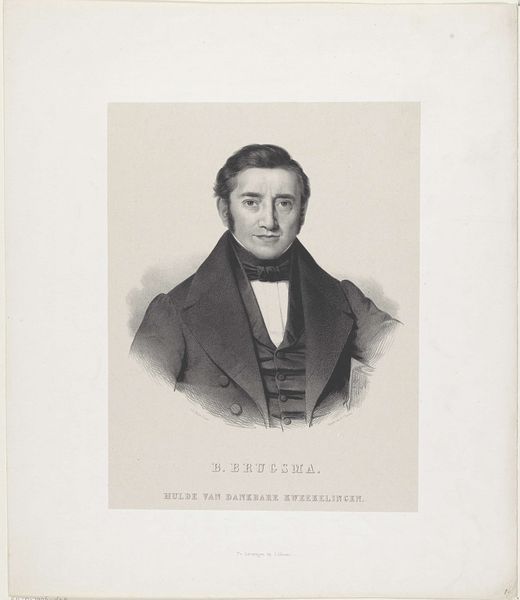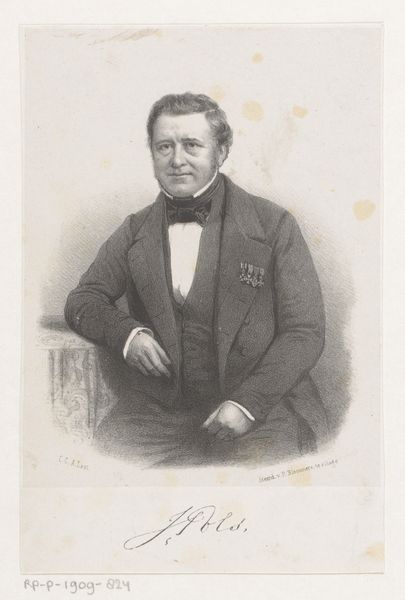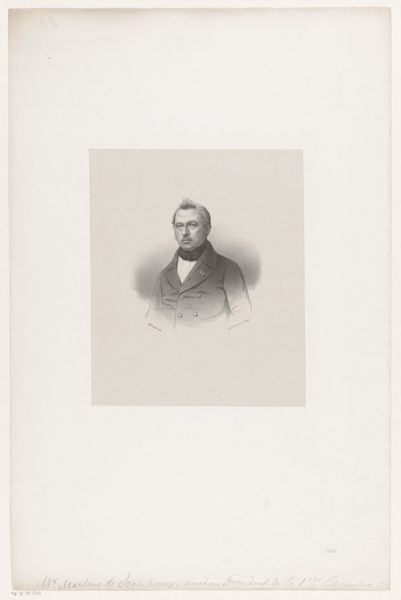
drawing, paper, graphite
#
portrait
#
pencil drawn
#
drawing
#
neoclacissism
#
aged paper
#
light pencil work
#
yellowing background
#
old engraving style
#
paper
#
historical photography
#
graphite
#
pencil work
#
realism
Dimensions: height 540 mm, width 345 mm
Copyright: Rijks Museum: Open Domain
Editor: This is "Portret van G.J. Pool," dating from 1822 to 1845. It’s a drawing using graphite on paper, currently held at the Rijksmuseum. The aged quality of the paper really gives it a sense of history and the detail is quite remarkable. What strikes you when you look at this portrait? Curator: What strikes me is the almost uncanny sense of bourgeois complacency. In this portrait we see more than just an individual; we see the visual manifestation of emerging class structures. This era, marked by Neoclassicism, often used portraiture to subtly reinforce social hierarchies. Notice his posture, his clothing, his gaze... what does it communicate? Editor: I see what you mean. There’s a stillness and formality to it. It seems to suggest respectability and a certain amount of social standing. The unflinching eye contact enforces his presence and hints at self-assurance. How does the artist's style factor into this portrayal? Curator: Bentinck's meticulous realism enhances that effect. It avoids idealization, presenting Pool in a way that suggests a claim to objectivity and authority – hallmarks of the rising bourgeoisie at the time. Could this commitment to realistic details indirectly reflect evolving political views in the Netherlands during that time? It subtly challenges aristocratic dominance, advocating a new, visually defined order. Editor: That’s a really interesting way to look at it, seeing the drawing not just as a representation of an individual but as a signifier of shifting societal values and challenges to the established aristocratic framework. It gives a whole new dimension to what might seem at first glance like just a formal portrait. Curator: Precisely! And in analyzing those dimensions, we deepen our understanding of both the artwork and the period in which it was created, while connecting art to the historical context of contemporary society. Editor: I'll definitely be keeping that in mind as I observe more pieces in the future.
Comments
No comments
Be the first to comment and join the conversation on the ultimate creative platform.

